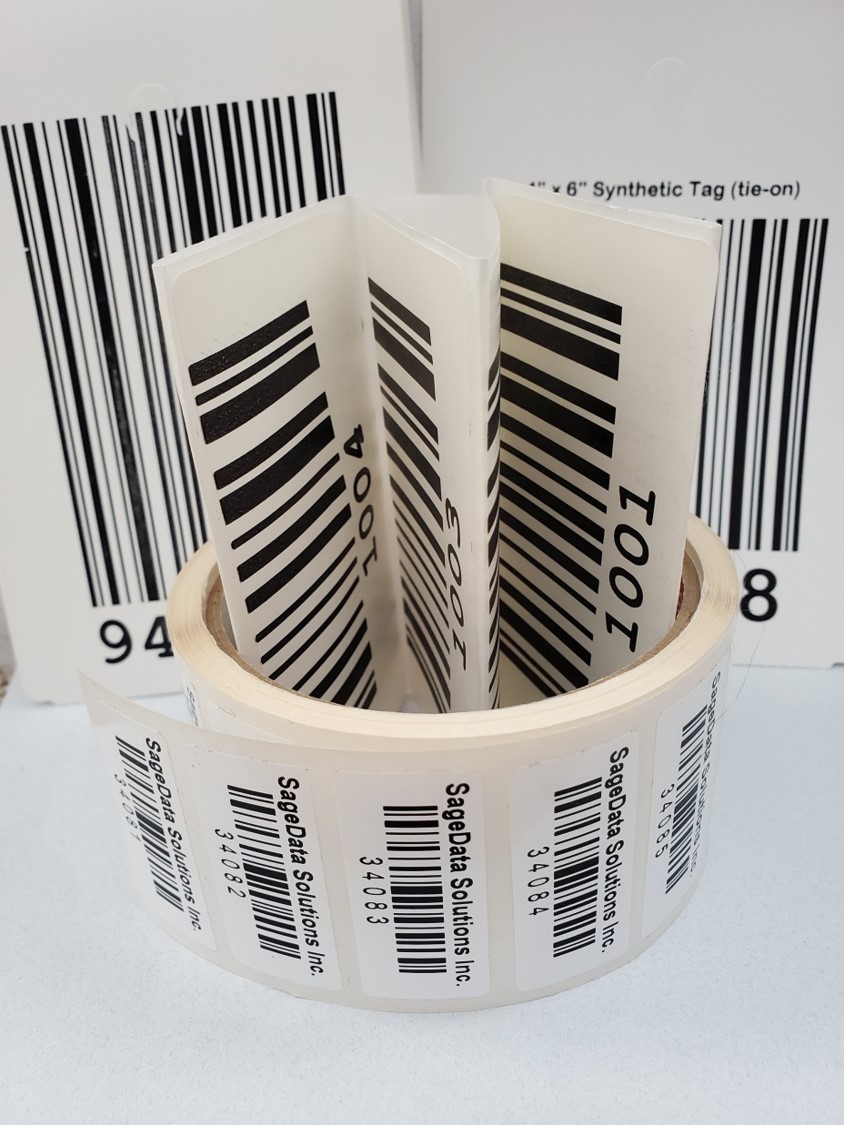Labels with Barcodes
How to design them for ease of reading
SageData is based in Ottawa, Ontario, Canada
Summary: Labels with barcodes can be used for many purposes, identifying an asset, or a SKU, a pallet, a crate or a location. An important point to consider is that these labels are often read by both machines (with barcode reading capability), but also by humans. So it is important to design them for ease of reading by both humans and machines. This note addresses common issues that sometimes affect the 'readability' of a label.
When people move from a paper based (or spreadsheet
based) system to a full fledged asset management or warehouse
management system, they invest in software, hardware..... and
labels.
The Labels are often the least expensive item on that list, but
they often attract the most attention, and sometimes elemental
mistakes in the design of the label can degrade the effectiveness of
the whole system. Here we talk about how to design a barcode label,
and describe some of the common errors, and how to avoid them.
#1 You don't have to buy a printer
Many of our clients are using our systems for asset
management, for equipment inspections, to track the issue and return
of tools / weapons and other applications. For these applications you
do not need a printer. Barcode printers are expensive to buy, tricky
to set up, inherently prone to failure (because of all the moving
mechanical parts), they need software, and you have to design the
labels.
So what is the alternative? Buy labels pre-printed. We offer labels to your
specification.
#2 Print black stripes on a white background
One of the most frequent questions we have is "do
barcodes have to be printed on a white background". The short answer
is yes. The longer answer is that you may be able to get away with
printing on other colors, but it is unreliable.
We have had cases where labels on textured backgrounds worked well
with some readers, but rendered other readers blind
. So this
becomes a solution of last resort. Read more about barcode label
colors and backgrounds here.
Our advice is talk to us or to another competent vendor.
#3 Use Code 128C - and an even number of characters
Many systems still use Code 39 as a symbology. But Code 128 has a smaller footprint, has more error checking,and can handle the full range of ascii characters. If you want to go for perfectionism, limit the ID you are encoding to numeric, and keep an even number of characters. This will enable the barcode to be printed using Code 128C, which is even more compact and easier to read.
#4 Barcodes need room, and quiet space
One of the most common errors that can render a barcode
unreadable, or worse, intermittently readable, is lack of quiet
space.
A barcode reader operates by distinguishing the white spaces from the
black bars. But it needs to understand what white is. So it
calibrates itself with the white space on either side of the bars. A
common error is to print to the edge of the label. The read then
becomes unreliable.
Two real life examples: labels which read when placed on a
white cabinet, but not when placed on a black cabinet, and the
executive who trimmed the white space on each side of the barcodes on
his office equipment, to make them look nicer
.
#5 Use 2D barcode for the smallest labels
A 2D barcode label can be very small. We have helped one
of our clients with tiny, less than 4 x 4mm labels containing 4
alphanumeric characters.
There is another advantage that 2D barcode offers - it can be scanned
/ read in any direction. Therefore, if small hardware pieces are
labeled with tiny 2D barcodes, they could be scanned without specific
orientation as long as the code is visible.

If you found this useful, you might also want to
review:
-
an introduction to barcode technology
- 1D or 2D
barcodes?
- mobile data
collectors
-
consulting services: barcodes and their applications
QAOK5358
